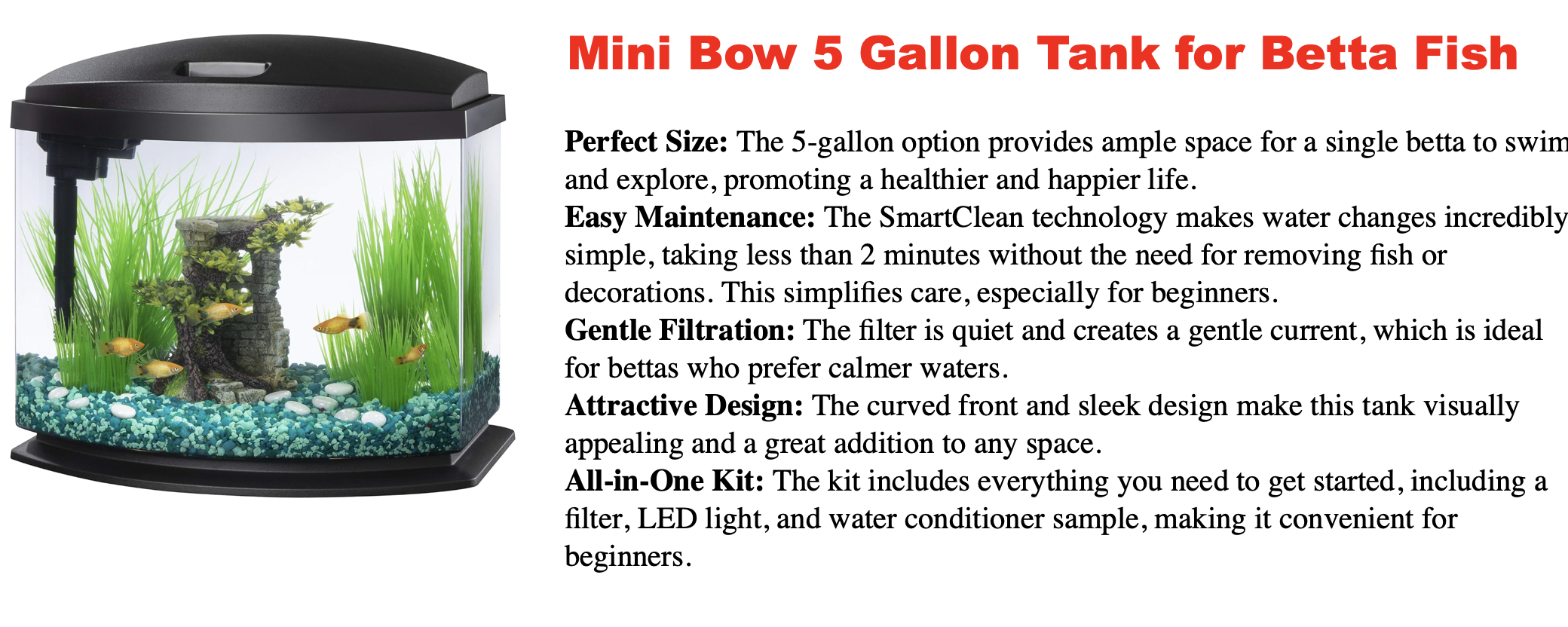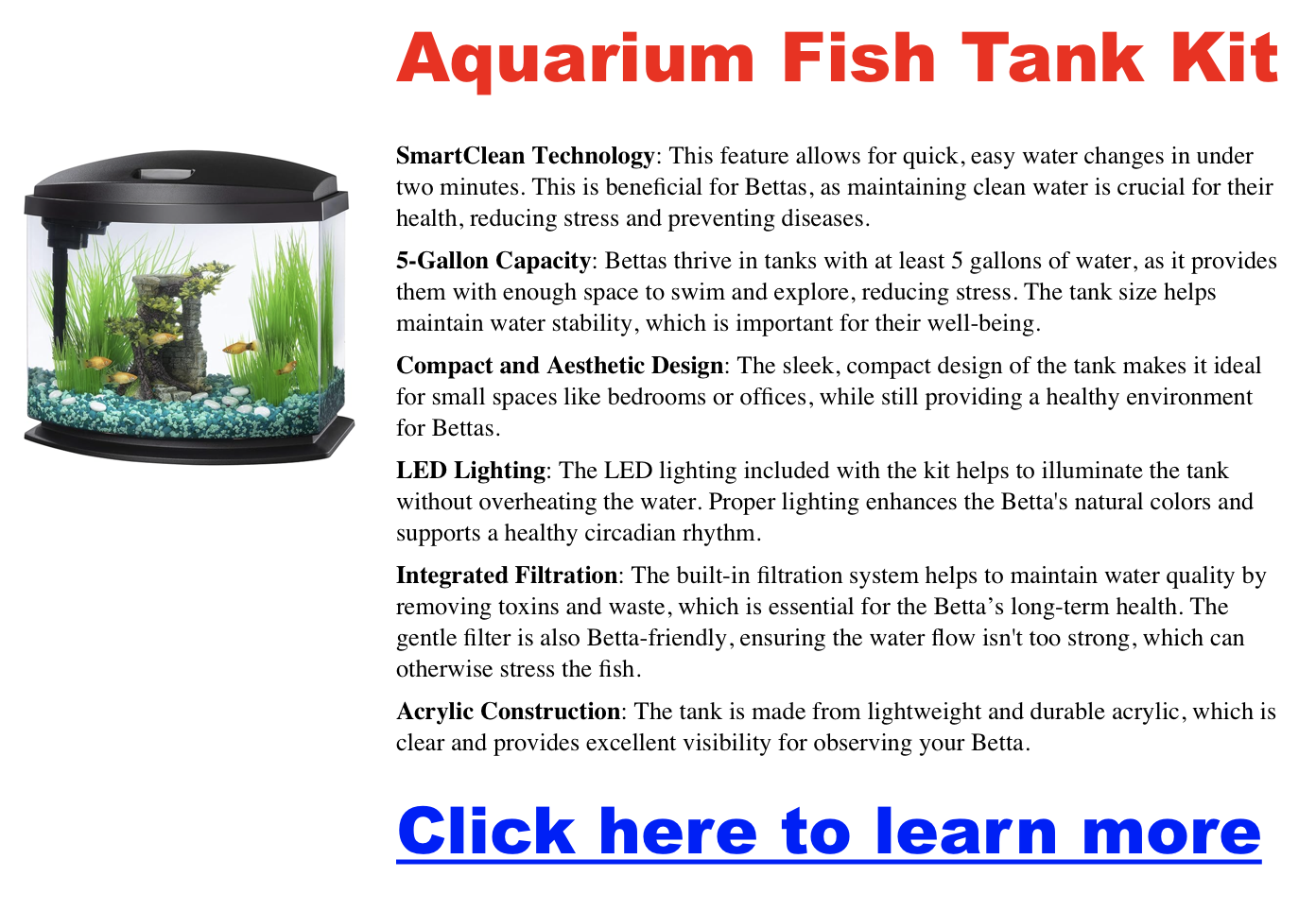Matt
Betta Rubra
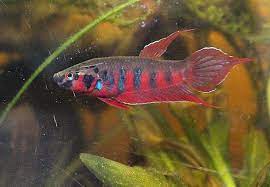
Credit: Jessie Lynn Billington
Betta rubra, also known as the Toba Betta, is a stunning wild betta species native to Lake Toba in Indonesia. Their compact size, subtle yet vibrant coloration, and engaging behaviors make them a fascinating choice for experienced aquarists seeking something unique.
Understanding the Needs of Betta Rubra
Click here for my favorite betta fish care guide for a happy & healthy life…
- Habitat Replication: Betta rubra comes from slow-moving blackwater environments. Providing soft, acidic water is critical. Consider the following:
- pH: 5.0-6.5
- Hardness: Very soft (GH 0-5, KH 0-3)
- Temperature: 77-82°F (25-28°C)
- Tank Setup: Start with a minimum of 5 gallons, but larger is better for this active fish. Densely plant your tank with live or high-quality silk plants. Include driftwood, Indian almond leaves, and subdued lighting to mimic their natural habitat. Opt for a gentle filtration system like a sponge filter.
- Peaceful Nature: Betta rubra is relatively peaceful compared to some betta species, opening up possibilities for tank setups beyond a single fish.
Feeding Your Betta Rubra
Wild Betta rubra are predominantly insectivores. Provide a varied diet for optimal health:
- Live Foods: Favorites include daphnia, bloodworms, and mosquito larvae.
- Frozen Foods: Substitute for live food when necessary.
- Pellets: Choose high-quality betta pellets formulated with minimal fillers as an occasional supplement.
Temperament and Tank Mates
- Males: They are best kept singly unless you have a large, very densely planted tank. Males can exhibit territoriality toward each other.
- Females: Can sometimes cohabitate in a spacious tank with ample hiding spots. Close supervision is a must, even with females.
- Community Tanks: Betta Rubra might suit a carefully designed community setup. Potential tank mates include small, peaceful species that thrive in similar water conditions, such as certain rasboras or tetras. Avoid large or boisterous tankmates.
Breeding Betta Rubra
Breeding Betta rubra requires dedication and experience. Here’s an overview:
- Separate Breeding Tank: Set up a dedicated breeding tank with soft, acidic water and plenty of cover.
- Conditioning the Pair: Feed the male and female high-quality live foods for several weeks before breeding.
- Courtship and Spawning: Betta rubra are bubble nesters. Observe their elaborate courtship dances and bubble nest building.
- Fry Care: Fry are tiny and require specialized foods (infusoria, microworms).
Betta Foerschi
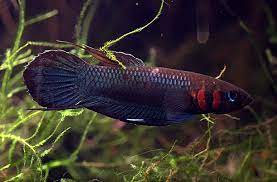
Credit: Seriously Fish
Hailing from the blackwater environments of Southeast Asia, Betta foerschi boasts striking iridescent coloration and offers a fascinating look at wild betta species. This post is meant to help create a thriving environment for them.
Understanding the Needs of Betta foerschi
- True Blackwater Fish: Like other species from these habitats, Betta foerschi require soft, acidic water. Using reverse osmosis (RO) water and a product for blackwater setups is usually essential. Aim for:
- pH: 5.0-6.5
- Hardness: Very soft to negligible (GH 0-5, KH 0-3)
- Temperature: 73-79°F (23-26°C)
- Tank Setup: Start with at least 5 gallons, though larger is always preferred. Create a densely planted environment with live or high-quality silk plants, driftwood, and Indian almond leaves. Gentle filtration, like that from a sponge filter, is crucial to avoid strong currents.
- Cover is Key: Betta foerschi naturally inhabit areas with dense surface vegetation. Include floating plants or driftwood pieces that break the surface, offering resting areas near atmospheric air access.
Feeding Your Betta foerschi
These wild bettas are carnivores. Provide a varied diet for optimal health:
- Live Foods: Their favorites include bloodworms, brine shrimp, and daphnia. These should be staples in their diet.
- Frozen Foods: Frozen versions make good substitutes if live foods are unavailable.
- Pellets: Choose high-quality betta pellets with minimal fillers and offer them sparingly as an occasional supplement.
Temperament and Tank Mates
- Males: Betta foerschi males should generally be kept alone. They will exhibit territoriality and aggression toward other males.
- Females: Can sometimes coexist peacefully in a very large, heavily planted tank. However, aggression can still occur, requiring close monitoring.
- Community Tanks: Proceed with extreme caution. Only consider this if you have extensive aquarist experience. Potential tank mates must tolerate identical water conditions and be small, peaceful, slow-moving fish that won’t intimidate the betta. Researching options thoroughly are vital.
Breeding Betta Foerschi
Breeding Betta foerschi is a project best suited for experienced betta keepers. Here’s an overview of the process:
- Separate Breeding Tank: Set up a dedicated breeding tank with the ideal water parameters.
- Conditioning the Pair: Feed high-quality live foods to encourage breeding readiness.
- Paternal Mouthbrooding: Betta foerschi are mouthbrooders. The male will hold eggs and fry in his mouth for incubation.
- Fry Care: Fry are incredibly tiny and sensitive, requiring live cultures of microscopic foods.
Additional Notes
- Availability: Betta foerschi are rarer in the aquarium trade, so you may need to find a breeder specializing in wild bettas.
- Sensitivity: Be attentive to water parameters. Betta foerschi can be less forgiving of fluctuations than some selectively bred bettas.
- Observation is Key: Monitor behavior carefully to ensure your Betta foerschi is thriving and adjust care as needed.
10 Reasons You Need a Betta Fish Guide Book for Success
The allure of betta fish, dazzling colors, and mesmerizing fins is undeniable. Beyond their beauty, many aquarists are drawn to the captivating yet complex process of breeding these fish. While introducing a male and female betta may seem simple, achieving a successful outcome involves more than just chance encounters. Understanding their biology, specific environmental requirements, and intricate behaviors is crucial to producing healthy, thriving betta fry. A comprehensive betta guidebook is the ultimate tool to illuminate your path to success.
10 Reasons to Invest in a Betta Fish Guidebook:
Click here for my favorite betta fish care guidebook
- In-Depth Betta Biology: Delve into the fascinating world of betta fish anatomy, focusing specifically on their reproductive systems and associated behaviors. Guidebooks provide valuable diagrams and explanations, enhancing your understanding of differentiating sexes, identifying prime breeding conditions, and anticipating the lifecycle of your eggs and fry.
- Optimal Water Conditions: Achieving the perfect water chemistry is critical for betta eggs and delicate fry. A guidebook will offer precise instructions on parameters like temperature, pH, hardness, and nitrogenous waste levels for optimal development. Learn the importance of water changes and how to create the ideal environment at each stage.
- Courtship and Mating Expertise: Witnessing the intricate betta courtship dance is thrilling, but knowing how to interpret and respond to their behaviors is a skill. Detailed guides dissect bettas’ visual cues, from flaring displays to subtle fin movements, ensuring you can facilitate successful mating and avoid potential aggression.
- Bubble Nest Support: Observe the dedication of a male betta as he tirelessly builds his bubble nest. Guidebooks explain the purpose of this unique structure and how to provide the best conditions for nest building and egg deposition. You’ll also learn how to safeguard the nest if needed and when you might provide artificial materials to assist the process.
- Specialized Fry Nutrition: Understanding the minuscule feeding requirements of betta fry is key to their survival. Guidebooks provide step-by-step instructions on culturing live foods like infusoria and microworms and recommend the best-prepared foods for each growth stage. Learn how feeding schedules evolve as your fry mature and ensure they thrive.
- Proactive Egg and Fry Health: Even the most experienced breeders can encounter challenges with eggs and fry. A guidebook is your reference for identifying diseases like fungus, understanding developmental abnormalities, and offering early treatment options. It teaches the importance of observation and spotting potential issues before they become critical.
- Understanding Betta Behavior: Successfully managing breeding pairs and fry requires careful observation and interpretation of betta behavior. Learn to understand stress cues, signs of readiness, and aggression signals to protect the adult fish and ensure a positive breeding experience.
- Tank Setup and Compatibility: Breeding Bettas require specialized tank setups. Guidebooks explain recommended tank sizes, optimal filtration, and decor that encourage successful breeding. Additionally, learn which species are safe or unsafe as potential tank mates during breeding or when raising fry.
- Advanced Breeding Strategies: If you want to go beyond the basics, a guidebook empowers you to explore the world of line breeding and selective traits. Gain insights into genetics, discover how to intensify colors, refine fin shapes, and develop unique betta strains.
- Access to Expert Knowledge: Reputable betta breeding guidebooks are often written by experienced hobbyists or professional breeders. They offer years of accumulated knowledge, helpful tips learned through experience, and troubleshooting advice from overcoming challenges. Tap into this valuable resource!
Conclusion
A betta breeding guidebook differentiates trial and error from an informed approach. By empowering yourself with the necessary knowledge and best practices, you increase your chances of success while ensuring the health and well-being of your betta fish. Invest in this essential tool and embrace the enriching journey of responsible betta breeding.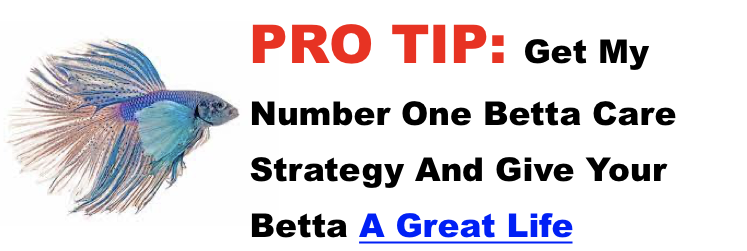
Betta Fish Fin Rot: Fin Loss, Symptoms, Causes & Treatment


Credit: aquariumopinions.com
Have your betta’s fins started to look ragged, frayed, or discolored? Don’t panic—fin rot is a common issue and one that’s completely treatable with the right steps. In this guide, you’ll learn how to identify fin rot, what causes it, the best treatment options for each severity level, and how to prevent it from coming back.
What Is Fin Rot?
Fin rot is a bacterial infection (often with a secondary fungal component) that causes a betta’s fins to become ragged, discolored, and eventually deteriorate. It usually develops due to poor water quality, stress, or injury, all of which weaken your betta’s immune system.
For help distinguishing between fin rot and simple fin loss, check out our comparison guide: Betta Fin Rot vs. Fin Loss
Symptoms of Fin Rot
Early signs:
- Frayed or ragged fin edges
- Discoloration (white, black, or red on the fin tips)
- Transparent or “melted” appearance
Moderate to severe signs:
- Holes in the fins or missing sections
- Inflamed or slimy base of the fins
- Lethargy, hiding, or appetite loss
What Causes Fin Rot?
- Poor Water Quality: Ammonia and nitrite spikes and an unclean tank environment promote the bacteria and fungi that cause fin rot. Use test strips to check water levels regularly. Learn more in our full guide on Ideal Betta Water Parameters
- Stress: Aggressive tank mates, sudden temperature changes, or overcrowding can lower immunity.
- Injury: Sharp decor or strong filters can tear fins, creating an entry point for infection.
How to Treat Fin Rot in Betta Fish
🔹 Mild Fin Rot (Early Stage)
Use Aquarium Salt
- Get water test kit
- Lower water temp to ~75°F to slow bacterial growth (but not below 74°F).
- Use a 1 tsp of aquarium salt per gallon (pre-dissolve in a separate cup).
- Perform 90% water changes daily.
- Repeat for up to 10 days. Discontinue if betta shows stress or if no improvement occurs.
🔹 Moderate Fin Rot
Use API Melafix
- Contains tea tree extract to heal damaged fins.
- Dose daily for 7 days.
- Combine with aquarium salt for better results.
- Ideal for bacterial infections and open wounds.
🔹 Severe Fin Rot / Body Rot
Use Stronger Medication (Maracyn + Maracyn 2)
- Do a 90% water change.
- Mix half the recommended dose of each product.
- Dose every 3 days for 9 days.
- If no change, pause for 4–5 days before trying again.
- Get the Betta Fish Guide Book
📅 Healing Timeline: What to Expect
- Days 1–3: Rot stops spreading
- Days 4–7: Appetite returns, fins may regain color
- Days 7–14: Fins begin regrowing (often clear at first)
- 2–4 weeks: Nearly full recovery in clean, stable tank conditions
🧱 Preventing Fin Rot from Coming Back
- Test water weekly and maintain ammonia/nitrites at 0 ppm
- Keep your tank between 78–81°F
- Use a filter with a gentle flow
- Smooth or replace sharp decorations
- Perform 25–50% weekly water changes
- Consider Indian almond leaves for natural antibacterial support
- Quarantine new fish or plants before adding to your main tank
- Ensure your setup meets proper standards. Read our full Betta Fish Tank Guide for tips on ideal tank size, equipment, and setup.
❓ Frequently Asked Questions
Is fin rot contagious?
Not directly, but poor water quality can affect all fish in the tank, making them more susceptible to infections like fin rot.
Will my betta’s fins grow back?
Yes, with proper care and clean water, your betta’s fins typically regrow within a few weeks. New fin growth often appears clear or slightly translucent.

Betta Uberis Wild Betta Fish Care, Setup, Feeding, and More!

Credit: Seriously Fish
The Betta uberis hails from the blackwater peat swamps of Indonesia, bringing a unique presence to dedicated aquarists interested in wild betta care. Their subtle beauty, intriguing behaviors, and specific care needs offer a rewarding challenge beyond the common Betta splendens.
| Care Aspect | Details |
|---|---|
| Tank Size | Minimum 5 gallons for a single Betta uberis. Larger tanks are needed for community setups. |
| Water Parameters | – Temperature: 74-80°F (23-27°C) – pH: 3.5-7.0 – Hardness: Soft to moderately hard |
| Diet | Primarily carnivorous. Feed a variety of high-quality, protein-rich foods like brine shrimp, daphnia, and specially formulated betta pellets. |
| Behavior | Generally peaceful but can be territorial, especially males. Suitable for species-specific tanks or with carefully chosen tank mates. |
| Compatibility | Best kept with other peaceful, small fish that prefer similar water conditions. Avoid fin nippers or overly active species. |
| Tank Setup | Dense vegetation and hiding spots. Low to moderate flow. Provide floating plants to mimic their natural habitat. |
| Lighting | Moderate. Avoid intense lighting to prevent stress. Natural light cycles are beneficial. |
| Water Change | Regular, at least 20-25% biweekly, to maintain water quality and reduce stress. |
Understanding the Needs of Betta Uberis
- True Blackwater Fish: Betta uberis require the soft, acidic conditions characteristic of their natural habitat. Using reverse osmosis (RO) water and a product for blackwater setups is usually essential. Aim for:
- pH: 3.5-6.0
- Hardness: Negligible, almost no detectable KH
- Temperature: 74-80°F (24-27°C)
- Tank Setup: A minimum of 5 gallons is recommended, with larger being better. Densely plant the tank (live or quality silk), and include natural elements like driftwood and Indian almond leaves. Filtration should be gentle, like a sponge or air-driven filter.
- Shy Nature: Wild Betta uberis are typically more timid than domestic Betta splendens. Provide plentiful hiding spots to reduce stress and bring out their natural behaviors.
Feeding Your Betta Uberis
In their natural habitat, these fish are insectivores. Offer a varied diet to ensure optimal health:
- Live Foods: Their favorites include bloodworms, brine shrimp, and daphnia. These should be staples in their diet.
- Frozen Foods: Frozen versions make good substitutes if live foods are unavailable.
- Pellets: Choose high-quality betta pellets with minimal fillers and offer them sparingly as an occasional supplement.
Temperament and Tank Mates
- Best Kept Alone: Male Betta uberis are generally solitary. Females can sometimes co-exist in a larger, heavily-planted tank, but close observation is essential, as aggression can still occur.
- Potential Community Setup: If attempting a community tank, choose companions carefully. Species must tolerate similar water conditions and be small, peaceful, slow-moving fish that won’t intimidate the betta. Opt for species like certain dwarf rasboras or bottom-dwelling Corydoras catfish. Research options thoroughly.
Breeding Betta Uberis
Breeding Betta uberis is an advanced endeavor for experienced betta keepers. Replicating their specific water parameters is crucial for success. Betta uberis are bubble-nesters, and the pair will exhibit elaborate courtship behaviors before spawning. Fry are extremely small and sensitive, requiring specialized feeding with live cultures of microscopic foods.
Additional Notes
- Sourcing: Finding a reliable breeder specializing in wild bettas is crucial for acquiring healthy Betta uberis stock.
- Disease Susceptibility: Wild bettas may be more prone to certain parasites or diseases than domestic bettas. Having a quarantine tank set up before bringing home new fish is recommended.
- Beginner-Friendly? Due to their specific care requirements, Betta uberis are not generally recommended for beginner aquarists.
- Observation is Key: Monitor your Betta uberis’ behavior carefully to ensure they thrive and adjust their care as needed.
The Rewards of Wild Bettas
Betta uberis offer a chance to observe a beautiful fish closer to its natural form. With meticulous care and attention to their unique needs, they will become a captivating centerpiece for your aquarium.
Betta Coccina Care, Fish Tank Setup, Feeding & More

Credit: Seriously Fish
If you want to add a flash of fiery color and fascinating behavior to your aquarium, the Scarlet Betta (Betta coccina) might be your ideal fish! This stunning wild betta comes from Southeast Asia’s peat swamps and streams, offering aquarists a unique and rewarding experience.
What Sets Betta coccina Apart
- Brilliant Coloration: Betta coccina males are named for their intense red coloration that deepens when they are excited or flaring. While smaller and less vibrant, females still possess a beautiful brown-red hue.
- Compact Size: This Betta species is relatively small, making them a suitable option even for modestly-sized aquariums.
- Bubble-Nesting Behavior: Like many bettas, male Betta coccina create intricate bubble nests on the water’s surface as part of their breeding ritual.
Setting Up a Betta coccina Paradise
Click here for my favorite book on betta fish care
- Tank Size: While smaller than some bettas, a minimum of 5 gallons is recommended for a single Betta coccina. A 10-gallon tank offers even more space for these active fish to explore.
- Mimicking Their Habitat: Replicate their natural environment with dense plant growth (live or high-quality silk), plenty of driftwood for hiding spots, and Indian almond leaves to release beneficial tannins.
- Filtration: Choose a gentle filtration system, like a sponge filter, to avoid creating strong currents.
- Water Conditions: Betta coccina thrive in soft, acidic water. Creating these conditions requires special attention:
- pH: 4.5-6.5
- Hardness: Very soft (GH 0-5, KH 0-3)
- Temperature: 75-82°F (24-28°C)
- You’ll likely need to use reverse osmosis (RO) water and remineralize it specifically for blackwater environments.
Feeding Your Scarlet Betta
These carnivorous fish will relish a varied diet. Offer them primarily:
- Live Foods: Bloodworms, daphnia, mosquito larvae, and brine shrimp are all favorites.
- Frozen Foods: A good substitute when live foods aren’t available.
- Pellets: Offer occasionally as a supplement, choosing high-quality betta-specific pellets.
Betta coccina Temperament and Tank Mates
Males of this species are best kept alone. While less aggressive than typical Betta splendens males, they will exhibit territorial behavior. Multiple females may coexist in a densely planted tank, but any signs of aggression require close observation.
If considering a community tank, choosing tank mates requires extra attention. Ideal tank mates are peaceful and inhabit similar acidic, soft water conditions. Some options include small tetras, rasboras, or bottom-dwelling fish like Corydoras. It’s essential to research any potential additions thoroughly.
Additional Considerations
- Sourcing: Locating Betta coccina may require finding a specialized breeder or online retailer concentrating on wild betta species.
- Potential Health Issues: Wild bettas can sometimes be more susceptible to certain parasites or diseases. Buy from reputable sources and consider a quarantine period for new fish.
- Behavioral Enrichment: Provide a stimulating environment with live plants offering broad leaves for resting, varying feeding locations, and occasional rearranging of décor for novelty.
The Allure of the Wild Betta
The Betta coccina offers aquarists a chance to care for a wild betta with dazzling colors and natural behaviors. You can create a thriving environment for this stunning fish with a little extra dedication to their specific needs.
Betta Hendra Care, Tank Setup, and More!

Discover the allure of Betta hendra, a lesser-known gem in the world of wild betta fish. Native to slow-moving streams in Indonesia, these vibrantly colored fish offer a fascinating glimpse into the diverse world of bettas beyond the familiar Betta splendens. Let’s explore what makes Betta hendra unique and how to provide them with the best possible care.
Understanding Betta Hendra
- Appearance: Betta hendra are smaller than typical Betta splendens. Males boast bold red, blue, and iridescent green coloration, particularly when flaring. Females are less vibrant but still beautifully patterned.
- Bubble Nesters: Like many bettas, male Betta hendra create intricate bubble nests for breeding purposes.
- Peaceful Nature: Compared to Betta splendens, Betta hendra is less aggressive, making it potentially suitable for certain community setups.
Elements of Optimal Betta Hendra Care
Click here for my favorite betta fish tank setup
- Tank Size and Layout: While Betta Hendra are a smaller species of Betta, they are active and appreciate spaceto swim. 5 gallons is recommended, with larger tanks providing an even more enriching environment. Replicate their natural environment with dense plant growth (live or high-quality silk plants), driftwood, and Indian almond leaves.
- Water Conditions: Betta hendra prefer a slightly acidic and soft water environment:
- pH: 6.0 – 7.0
- Hardness: Soft to moderate (GH 5-12, KH 0-8)
- Temperature: 76-82°F (24-28°C)
- Filtration: Opt for a gentle filter or air-powered sponge filter that won’t create strong currents.
- Feeding: In the wild, these fish are carnivores. Offer a varied diet including live foods like brine shrimp, daphnia, and bloodworms, with frozen alternatives when necessary. Supplement their diet with a high-quality betta pellet occasionally.
Tank Mates for Betta Hendra
Betta hendra males are best kept singly, though females can sometimes cohabitate in a spacious, heavily-planted tank. If considering a community tank for Betta hendra, choose potential tankmates very carefully:
- Peaceful Species: Opt for small, docile fish that inhabit similar water conditions. Some potential options include Rasboras, certain Tetras, and bottom-dwelling Corydoras catfish.
- Slow-moving: Avoid fin-nipping species or fish with long, flowing fins that might tempt a betta.
- Observation is Crucial: Monitor any community tank closely for signs of aggression or stress.
The Challenge of Breeding Betta Hendra
Breeding Betta hendra follows similar principles to other bubble-nesting Bettas. Prepare a separate breeding tank and condition your pair with high-quality foods. The process involves elaborate courtship and meticulous fry rearing. Thorough research is essential for success.
Things to Remember
- Availability: Betta hendra are less common in the aquarium trade than Betta splendens. You’ll likely need to locate a breeder specializing in wild bettas.
- Sensitivity: Pay close attention to water parameters and avoid drastic changes as Betta hendra can be less forgiving than selectively bred bettas.
The Rewards of Wild Bettas
Betta hendra offers a beautiful and less aggressive alternative to commonly available bettas. Their unique coloration and relatively peaceful nature make them a captivating addition to a thoughtfully-designed aquarium.
Betta Pallifina Care, Tank Setup, and More

Credit: Seriously Fish
If you’re looking for a betta fish that stands out from the crowd, Betta pallifina might be your perfect match. This wild betta boasts stunning iridescent blue and green coloration and an energetic personality. Native to the peat swamp forests of Borneo, Betta pallifina provides a unique and captivating addition to a thoughtfully-designed aquarium.
About Pallifina
Betta pallifina
Betta pallifina is a species of wild betta native to Borneo, specifically Kalimantan, Indonesia. It inhabits slow-moving blackwater streams, peat swamps, and forested rivers with acidic, tannin-rich waters. Betta pallifina belongs to the Betta unimaculata complex, a group known for its larger size and unique breeding behavior.
Physical Characteristics
-
Size: Betta pallifina is a relatively large betta species, reaching up to 8–10 cm (3–4 inches) in length.
-
Coloration: Features earthy tones, with a mix of green, brown, and iridescent blue hues. Males display more intense coloration, particularly around the gill plates and fins.
-
Finnage: Males have longer and more colorful fins, while females have shorter, less vibrant fins.
Understanding the Needs of Betta Pallifina
- Mimicking Their Natural Habitat: Betta pallifina come from blackwater environments, characterized by soft, acidic water and abundant plant life. Replicating these conditions is crucial for their well-being.
- Tank Size: 5 gallons for a single betta is a good start, but larger is better. Opt for a long tank rather than a tall one to provide more swimming space.
- Filtration: A gentle sponge filter or air-driven filter is necessary to avoid strong currents.
- Water Parameters: Betta pallifina are sensitive to water conditions. Aim for these parameters:
- pH: 5.0-6.5
- Hardness: Very soft (GH 0-5, KH 0-3)
- Temperature: 75-80°F (24-27°C)
- Décor: Dense planting with live or silk plants, driftwood, and Indian almond leaves (to release beneficial tannins) recreates their natural environment.
- Tank Mates: Betta pallifina males are best kept alone. A small group of females might be possible in very large, well-structured tanks, but requires careful observation. Even females can sometimes show aggression toward each other.
Feeding Your Betta Pallifina
In the wild, these fish are carnivorous predators. Provide a varied diet for optimal health:
- Live foods: Bloodworms, blackworms, brine shrimp, daphnia – these are their favorites.
- Frozen foods: Substitute for live foods when necessary.
- High-quality pellets: Choose betta-specific pellets as a supplemental food.
Important Considerations for Betta Pallifina
- Water Preparation: Unlike with some betta species, using straight tap water is generally unsuitable for Betta pallifina. They require very soft, acidic water. You’ll likely need to use reverse osmosis (RO) water and remineralize it with products specifically designed for blackwater aquariums. Testing kits to accurately measure pH, KH, and GH are crucial.
- Tank Maintenance: Betta pallifina require pristine water conditions. More frequent partial water changes (up to 50% weekly) and gentle substrate vacuuming will help prevent any water quality issues.
- Rarity and Expense: Betta pallifina are less common in the aquarium trade, making them harder to find and potentially more expensive than standard pet-store bettas.
- Behavioral Observation: Closely monitor Betta pallifina, especially when introducing them to a new tank. They can be a little more skittish than some selectively bred bettas. Providing numerous hiding spots will help them feel secure.
Breeding Betta Pallifina: A Note
Betta pallifina are mouthbrooding bettas, meaning the male holds the eggs in his mouth for incubation. Breeding this species is a complex project requiring extensive research and betta care experience. Successful breeding contributes to the preservation of these beautiful fish.
The Joy of Wild Bettas
Betta pallifina offer a rewarding experience for aquarists seeking something different. Their striking appearance, natural behaviors, and specific care requirements make them a fascinating and captivating addition to the world of betta keeping!
Betta Siamorientalis Care, Tank Setup, Breeding
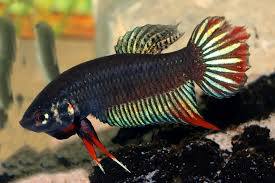
credit: Seriouslyfish.com
Betta fish enthusiasts often focus on the dazzling, long-finned Betta splendens, the common variety found in most pet stores. However, the world of Betta fish is vast, and one particularly fascinating species is the Betta siamorientalis. This wild betta offers something unique – a glimpse into the natural beauty and behaviors of the Betta genus.
Siamorientalis
Betta siamorientalis is a wild betta species native to Thailand and Vietnam, primarily found in slow-moving streams, rice paddies, and peat swamps. They are part of the Betta splendens complex, closely related to Betta imbellis and Betta smaragdina, and share similar characteristics with these species.
Physical Characteristics
-
Finnage: Unlike selectively bred bettas, Betta siamorientalis has short, compact fins rather than long flowing ones.
-
Coloration: Their natural coloration includes subtle shades of green, blue, and red, often displaying an iridescent sheen.
-
Size: Typically smaller than domesticated bettas, they reach about 5–6 cm (2 inches) in length.
Behavior and Habitat
-
Bubble-Nesting: Males construct bubble nests at the water’s surface to protect their fertilized eggs, a common trait in many betta species.
-
Aggression Level: Generally less aggressive than domesticated Betta splendens, but still territorial, especially during breeding.
-
Water Conditions: Prefer soft, acidic water (pH around 5.5–6.5), with temperatures between 24-28°C (75-82°F).
Care in Captivity
-
Tank Setup: A well-planted tank with leaf litter, driftwood, and hiding spots mimics their natural environment.
-
Diet: They are carnivorous and thrive on a diet of live or frozen foods like daphnia, bloodworms, and mosquito larvae.
-
Tankmates: Best kept in species-only setups or with peaceful, non-competing fish due to their territorial nature.
Setting Up a Betta Siamorientalis Paradise
- Tank Size: 5 gallons is recommended for a single Betta siamorientalis. However, a larger tank (10 gallons or more) provides additional swimming space and a more stable environment.
- Filtration: Choose a gentle filter like a sponge filter. Wild bettas prefer slow-moving water.
- Heater: This species thrives in warm water between 75-82°F (24 and 28°C). Install a reliable aquarium heater to maintain these temperatures.
- Décor and Plants: Simulate their natural environment with plenty of live or silk plants. Include driftwood or caves for hiding spots and security. Indian almond leaves provide additional benefits, releasing tannins that mimic their native habitat.
- Tank Mates: Male Betta siamorientalis should generally be kept alone. Females can sometimes co-exist in a larger, heavily planted tank, but close monitoring is necessary. Even females might show aggression toward each other.
Feeding Your Betta Siamorientalis
Betta Siamorientalis are carnivores, and that is why we have a great article on the best foods to feed Siamorientalis. Provide them with a diverse diet to ensure optimal health:
- Live Foods: Their favorites include bloodworms, daphnia, brine shrimp, and mosquito larvae.
- Frozen Foods: A good alternative to live foods, these include frozen bloodworms and brine shrimp.
- Pellets: Choose high-quality betta pellets formulated with minimal fillers. Offer them occasionally to add variety.
Water Conditions for Optimal Health
Betta siamorientalis can be slightly more sensitive to water parameters than selectively-bred bettas. Pay attention to these factors:
- pH: Aim for a pH between 6.0 and 7.5.
- Hardness: Soft or moderately hard water is preferred (GH 5-12, KH 0-8).
- Ammonia and Nitrites: Maintain a zero level for both ammonia and nitrites.
- Nitrates: Keep nitrates below 20 ppm with regular water changes.
Additional Considerations
- Availability and Sourcing: Betta siamorientalis are rarer in the aquarium trade than Betta splendens. You’ll likely need to find a specialized breeder or online retailer concentrating on wild betta species. Always ensure you are sourcing your fish from a reputable source that prioritizes the health of the animals.
- Water Changes: Betta siamorientalis benefit from regular partial water changes (25-50% weekly) to maintain pristine water conditions.
- Jumping: Like other bettas, Betta siamorientalis are excellent jumpers. Securely lid your tank to prevent escapes.
- Tank Cover: Provide floating plants or driftwood that break the surface for resting areas near atmospheric air access.
Breeding Betta siamorientalis
Breeding Betta siamorientalis offers a fascinating but more advanced challenge for aquarists. Unlike the relatively simple process with some Betta splendens, breeding this wild Betta requires dedication and meticulous preparation.Here’s an overview:
- Separate Breeding Tank: Set up a dedicated breeding tank (around 5-10 gallons) with a gentle filter, heater, and plenty of hiding spots for the female.
- Conditioning the Pair: Feed the male and female high-quality live foods for several weeks prior to breeding to promote good health and egg production.
- Introductions and Courtship: Carefully introduce the pair into the breeding tank. Observe their behaviors. The male will build a bubble nest and display elaborate courtship dances to attract the female.
- Spawning: If receptive, the female will develop vertical stripes and join the male under his nest. During spawning, eggs are released and fertilized, and the male carefully collects them in his bubble nest.
- Post-Spawning Care: Remove the female after spawning. The male will usually nest and fiercely guard the eggs. He will not eat during this period.
- Fry Care: Once hatched, tiny fry need specialized foods like infusoria or microworms. As they grow, gradually transition them to larger foods.
Important Notes:
- Breeding any betta can be unpredictable. Sometimes pairs may not be compatible.
- Fry care for Betta siamorientalis can be demanding. Be prepared to raise live cultures of very small foods.
- Thorough research is crucial before attempting to breed Betta siamorientalis. For guidance, connect with experienced breeders or online communities specializing in wild bettas. You can also learn all about betta fish eggs and identifying them here.
Betta Stiktos Care, Tank Setup, Breeding
Betta stikos, a relatively rare species within the aquarium trade, hail from the stagnant waters of the Mekong drainage in Cambodia. These fish prefer environments with little to no current, thriving in ponds, flooded fields, or ditches. Known for their shy yet territorial nature, Betta stikos present a unique challenge and reward for aquarists.

Stikos Nutritional Needs
Betta stikos are carnivorous, requiring a diet consisting of insects and worms to mimic their natural feeding habits. Preferred food sources include:
- live or frozen baby brine shrimp
- daphnia, tubifex,
- bloodworms, and mosquito larvae.
- Pellet food is often rejected in favor of these more natural options.
Companion Compatibility
While generally calm, Betta stikos can exhibit territorial aggression, making the selection of tank mates crucial. Suitable companions may include:
- Micro fishes such as Celestial Pearl Danios or Boraras, known for their calm demeanor
- Shrimps should be added before the Betta stikos to establish territory and reduce the risk of aggression.
Stikos Breeding Insights
Breeding Betta stikos involves a series of steps aimed at encouraging natural behaviors and ensuring the safety of both the adults and the offspring:
- Introduction and Courtship: A clear divider may be used to introduce the male and female, allowing them to acclimate to each other’s presence without direct contact. This prevents premature aggression and allows for the display of behaviors that are part of the courtship process.
- Bubble Nest Construction: The male constructs a bubble nest at the water’s surface, signaling readiness for breeding. The environment should support this behavior with calm water and suitable nesting materials.
- Spawning: Following successful courtship, the female releases eggs which the male fertilizes and places into the bubble nest. Careful monitoring is essential to manage potential aggression from the male towards the female post-spawning.
Stikos Fry Care
The post-spawning care of Betta stikos fry involves a delicate balance of appropriate feeding and maintaining ideal water conditions:
- Start with infusoria or specially formulated liquid fry food, transitioning to baby brine shrimp as the fry grow.
- Frequent, small feedings are crucial to meet the high metabolic demands of the developing fry without compromising water quality through overfeeding.
Stikos Disease Prevention and Management
Common diseases affecting Betta fish, including Betta stikos, often stem from poor water quality or stress. Fin rot, Ich, and velvet disease are notable concerns, with prevention focusing on maintaining clean water, stable environmental conditions, and prompt treatment with appropriate medications when necessary. Learn more about betta diseases here.
Setting Up the Ideal Tank
Size and Tank Size and Layout: A tank of at least 30cm is recommended for individual Betta stikos, with larger sizes being better to accommodate their territorial instincts and provide space for potential tank mates. The layout should mimic their natural habitat as closely as possible, including features such as:
- Low-tech planted areas
- Makeshift caves and driftwood for hiding
- Minimal bright lighting to replicate the dimly lit environments of their native habitats.

Water Conditions: Achieving and maintaining the correct water conditions is crucial for the health of Betta stikos. The ideal parameters include:
- Temperature: 22-26°C
- pH levels: 5-7.5
- Water hardness: Up to 10°dGH
- Regular monitoring and maintenance to ensure these conditions remain stable, especially during the breeding process.
Caring for Betta stikos is a rewarding endeavor that requires attention to detail in tank setup, water conditions, nutrition, and breeding practices. As with all aquarium inhabitants, a commitment to ongoing learning and adaptation to the needs of Betta stikos will ensure their health and happiness within the aquatic community.
This guide has covered the essentials, but remember, each Betta stikos is an individual, and observation and responsiveness to their specific behaviors and needs will further enhance your success in caring for these exquisite fish.



